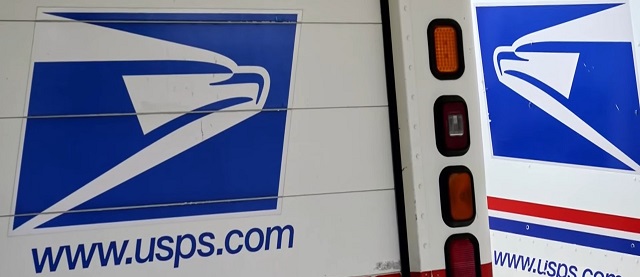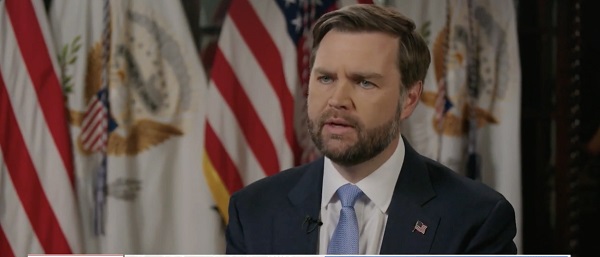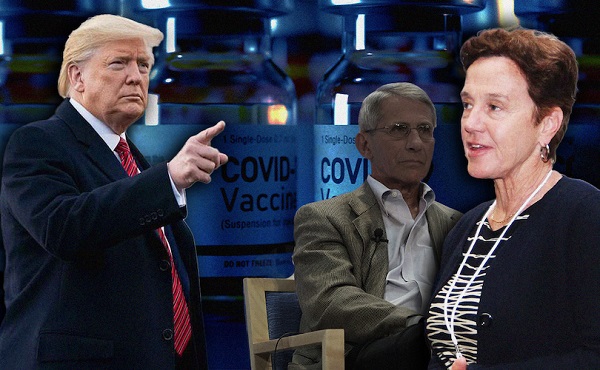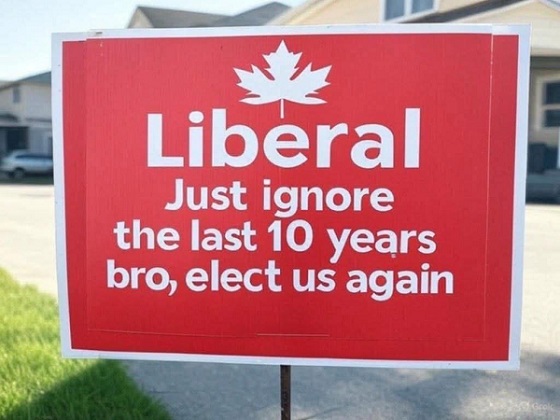Daily Caller
Get Ready For Another Mail-In Ballot Fiasco

From the Daily Caller News Foundation
By John Fund and Hans von Spakovsky
Many states are now sending out mail-in ballots for the November election.
Yet at the same time that so many more voters are depending on the mail to cast their ballots, the two leading national organizations of election officials wrote the U.S. Postal Service demanding immediate action to avoid confusion and chaos with mail-in ballots.
“We implore you to take immediate and tangible corrective action to address the ongoing performance issues with USPS election mail service,” wrote the National Association of State Election Directors and the National Association of Secretaries of State. “Failure to do so will risk limiting voter participation and trust in the election process.” According to the U.S. Election Assistance Commission, mail-in ballots accounted for 43% of the electorate in 2020, a 20-percentage point increase from 2016.
The letter’s list of problems should alarm anyone thinking of voting through the mail instead of going to their polling place to vote in-person. That includes USPS staff nationwide who “are uninformed about USPS policies around election mail,” resulting in “significantly delayed, or otherwise improperly processed” absentee ballots. “Timely postmarked ballots” are being received “10 or more days after postmark,” demonstrating USPS’s “inability to meet their own service delivery deadlines.”
This letter follows a July report from the USPS’s own Inspector General, which warned that its audit of primaries in 13 states found that 2.99% of mail-in ballots reached voters too late and 1.83% were returned to election offices after their legal deadlines. Its list of horror stories included the discovery that “local management at one facility stated they were not aware primary Election Day was that week.”
That means that almost 5% of voters are being disenfranchised, which amounts to hundreds of thousands of votes across the country.
There are reports of other nightmares. Kansas Secretary of State Scott Schwab is “extremely concerned” that in the August primary, 2% of ballots sent by mail were not counted “due to USPS administrative failures.”
“The Pony Express is more efficient at this point” said Schwab.
In July, Utah had a photo-finish Republican congressional primary where the victory margin was 176 votes. But nearly 1,200 mail-in ballots were not counted because they were first sent to a Las Vegas distribution center and not postmarked on time. Most of those ballots were in a county that was carried two-to-one by the candidate who ultimately lost.
The Public Interest Legal Foundation has sued Nevada officials for failure to fix obvious errors on the voter rolls. The organization has found hundreds of questionable voter addresses that include strip clubs, casinos, bars, vacant lots, gas stations, and fast-food restaurants. “Nevada’s policy of automatically mailing a ballot to every active registered voter makes it essential that election officials have accurate voter rolls and are not mailing ballots to addresses where no one lives,” PILF notes.
PILF points out that in 2022, Nevada’s U.S. Senate race was decided by 7,928 votes, which determined party control of that body. The Secretary of State, PILF noted, “published figures showing that 95,556 ballots were sent to undeliverable or ‘bad’ addresses and another 8,036 were rejected upon receipt.” Also: “Another 1.2 million ballots never came back to officials for counting.”
This year, Nevada has another competitive Senate race that could determine the Senate majority.
Nationwide, the U.S. Election Assistance Commission reports that of the almost 91 million mailed ballots sent to voters in all states in 2020, only 70 million were returned.
What happened to the others? Some weren’t filled out. But other completed ballots were probably lost by an increasingly inefficient Postal Service. And election officials complained in their letter to the USPS that election mail being “sent to voters” is being returned as “undeliverable” at a “higher than usual rate.” Some voters registered more than once got more than one ballot.
At least 1.1 million went to outdated addresses. Some may have gone to vacant lots and businesses. Some 500,000 were rejected by election officials when they were returned often due to voter errors that could have been corrected by election officials if the voters had cast their ballot in-person.
Registration lists are notoriously chock full of ineligible, duplicate, fictional and deceased voters, a fact easily exploited to commit fraud. Ballots cast by mail can become the object of intimidation and vote-buying schemes.
In 2005, a bipartisan Commission on Federal Election Reform chaired by former President Jimmy Carter and former Secretary of State James Baker pointed out that “absentee ballots remain the largest source of potential voter fraud.” Even the New York Times admitted in 2012 that “votes cast by mail are less likely to be counted, more likely to be compromised and more likely to be contested than those cast in a voting booth.”
Little has changed, In 2019, a congressional race in North Carolina was thrown out over mail-in ballots gathered through illegal vote trafficking. A judge ordered a new election in the Bridgeport, Connecticut, mayor’s race last year after a video appeared to show two women stuffing suspect large numbers of absentee ballots into drop boxes.
In New York, three Rensselaer County officials are on trial this month accused of mail-in ballot fraud. A former GOP elections commissioner who has already pleaded guilty testified that looser post-COVID mail-in procedures make it much easier to commit voter fraud.
Before Election Day, Postal Service officials must address concerns about delays and mishandling of absentee ballots. Sloppy U.S. voting rules on everything from vote trafficking by third parties to lax or nonexistent ID laws in many states make it vital there be election observers watching every aspect of the voting and tabulation process.
And after the weeks of litigation and delays in counting that a tsunami of mail-in ballots will no doubt create, we should rethink the advice of those who disparage in-person voting and assure us “that the ballots are in the mail.”
After all, if you won the lottery, would you mail your ticket in or appear in person to claim your jackpot?
Hans von Spakovsky is a senior legal fellow in the Edwin Meese III Center for Legal and Judicial Studies at the Heritage Foundation.
John Fund is National Review’s national-affairs reporter.
Business
Will Trump’s ‘Liberation Day’ Tariffs End In Disaster Or Prosperity?


From the Daily Caller News Foundation
By J.D. Foster
“Liberation Day” has come. So what does it mean? Beats the hell out of me.
What we know is that President Trump’s avalanche of tariffs was to hit a peak on April 2; not end, mind you; not necessarily “the” peak, as more could be on the way; but a peak.
No Trump policy more completely breaks with America’s past than his “beautiful” tariffs on just about everything coming into the United States from just about anywhere.
Will this new policy liberate American manufacturing from foreign shackles? Will it usher in a new era of prosperity, keeping in mind the United States had for many years the consistently best-performing economy in the industrialized world, even overcoming the many inane obstacles erected by the Biden-Harris Administration?
Or will it leave the United States isolated, friendless, and weakened?
The correct answer at this point is no one knows, not even the bloviating talking heads on TV confidently predicting demise or Shangri-la.
Think of it this way. Suppose you’re a restaurant chef and a woman hands you a new recipe. Her father turns 75 soon and they want to have a party at the restaurant. The recipe is for the father’s favorite dish, one her mother made for years.
The recipe looks old, with odd ingredients and processes you’ve not seen before. Now judge it as a chef.
You can’t. Even as you start chopping and dicing, mixing ingredients as instructed, you’re not too sure how this is going to turn out. You have to wait until the dish is on the plate and taste it.
That’s the case with Trump’s tariffs. How will this all turn out? It’s too soon to tell.
The stock market sure doesn’t like it, but why should it? The investor class doesn’t understand this any better than you do. What they do understand is this new policy has upended assumptions and created enormous new uncertainties. We know that dish as those ingredients are always good for a big pullback.
Much of the confusion arises because we don’t know the underlying policy and likely this uncertainty is intentional. Trump likes keeping his counterparts, in this case our trading partners, guessing. If it means Americans are confused for a bit, Trump’s cool with that. Breaking eggs to make an omelette. It will pass and America will be great again afterward. Bon appetite.
If the core policy is to erect massive and mostly permanent tariff walls behind which American firms can hide, then we know how this will turn out: America, meet the dustbin of history.
If the core policy is to force our trading partners to deal with America fairly by reducing their trade barriers after which Trump will remove his tariffs, then this could turn out very well. Tariffs (and non-tariff barriers) in the U.S. and those of our trading partners would fall, reinvigorating the free trade that has energized prosperity for decades.
Which is it? Walls and doom or freedom and prosperity? Again, too early to tell.
Whatever else Trump does in his second term, these tariffs will define his presidency, akin in consequence to Ronald Reagan’s pro-growth tax cuts and Joe Biden’s inflation.
Trump in his second term clearly lives by the saying, “go bold or go home.” He’s got “bold” down pat. We will see over the next year or so whether he and the Republicans go home. Has he liberated Democrats from any fear of Republicans in the mid-terms or in 2028, or he’s liberated America from any fear of Democratic socialism and wokism returning in our lifetimes. The chips are all-in. Soon we will see the cards. Uncertainty, indeed.
JD Foster is the former chief economist at the Office of Management and Budget and former chief economist and senior vice president at the U.S. Chamber of Commerce. He now resides in relative freedom in the hills of Idaho.
Business
‘Time To Make The Patient Better’: JD Vance Says ‘Big Transition’ Coming To American Economic Policy

JD Vance on “Rob Schmitt Tonight” discussing tariff results

From the Daily Caller News Foundation
By Hailey Gomez
Vice President JD Vance said Thursday on Newsmax that he believes Americans will “reap the benefits” of the economy as the Trump administration makes a “big transition” on tariffs.
The Dow Jones Industrial Average dropped 1,679.39 points on Thursday, just a day after President Donald Trump announced reciprocal tariffs against nations charging imports from the U.S. On “Rob Schmitt Tonight,” Schmitt asked Vance about the stock market hit, asking how the White House felt about the “Liberation Day” move.
“We’re feeling good. Look, I frankly thought in some ways it could be worse in the markets, because this is a big transition. You saw what the President said earlier today. It’s like a patient who was very sick,” Vance said. “We did the operation, and now it’s time to make the patient better. That’s exactly what we’re doing. We have to remember that for 40 years, we’ve been doing this for 40 years.”
“American economic policy has rewarded people who ship jobs overseas. It’s taxed our workers. It’s made our supply chains more brittle, and it’s made our country less prosperous, less free and less secure,” Vance added.
Vance recalled that one of his children had been sick and needed antibiotics that were not made in the United States. The Vice President called it a “ridiculous thing” that some medicines invented in the country are no longer manufactured domestically.
“That’s fundamentally what this is about. The national security of manufacturing and making the things that we need, from steel to pharmaceuticals, antibiotics, and so forth, but also the good jobs that come along when you have economic policies that reward investing in America, rather than investing in foreign countries,” Vance said.
WATCH:
With a baseline 10% tariff placed on an estimated 60 countries, higher tariffs were applied to nations like China and Israel. For example, China, which has a 67% tariff on U.S. goods, will now face a 34% tariff from the U.S., while Israel, which has a 33% tariff, will face a 17% U.S. tariff.
“One bad day in the stock market, compared to what President Trump said earlier today, and I think he’s right about this. We’re going to have a booming stock market for a long time because we’re reinvesting in the United States of America. More importantly than that, of course, the people in Wall Street have done well,” Vance said.
“We want them to do well. But we care the most about American workers and about American small businesses, and they’re the ones who are really going to benefit from these policies,” Vance said.
The number of factories in the U.S., Vance said, has declined, adding that “millions of workers” have lost their jobs.
“My town [Middletown, Ohio], where you had 10,000 great American steel workers, and my town was one of the lucky ones, now probably has 1,500 steel workers in that factory because you had economic policies that rewarded shipping our jobs to China instead of investing in American workers,” Vance said. “President Trump ran on changing it. He promised he would change it, and now he has. I think Americans are going to reap the benefits.”
-

 2025 Federal Election22 hours ago
2025 Federal Election22 hours agoCanada Continues to Miss LNG Opportunities: Why the World Needs Our LNG – and We’re Not Ready
-

 International2 hours ago
International2 hours agoGermany launches first permanent foreign troop deployment since WW2
-

 COVID-192 days ago
COVID-192 days agoTrump’s new NIH head fires top Fauci allies and COVID shot promoters, including Fauci’s wife
-

 Freedom Convoy2 days ago
Freedom Convoy2 days agoFreedom Convoy leaders Tamara Lich, Chris Barber found guilty of mischief
-

 2025 Federal Election20 hours ago
2025 Federal Election20 hours agoMainstream Media Election Coverage: If the Election Was a NHL Game, the Ice Would be Constantly Tilted Up and to the Left
-

 Business1 day ago
Business1 day ago‘Time To Make The Patient Better’: JD Vance Says ‘Big Transition’ Coming To American Economic Policy
-

 2025 Federal Election1 day ago
2025 Federal Election1 day agoPoilievre promises to drop ‘radical political ideologies’ in universities
-

 2025 Federal Election2 days ago
2025 Federal Election2 days agoWill Four More Years Of Liberals Prove The West’s Tipping Point?






